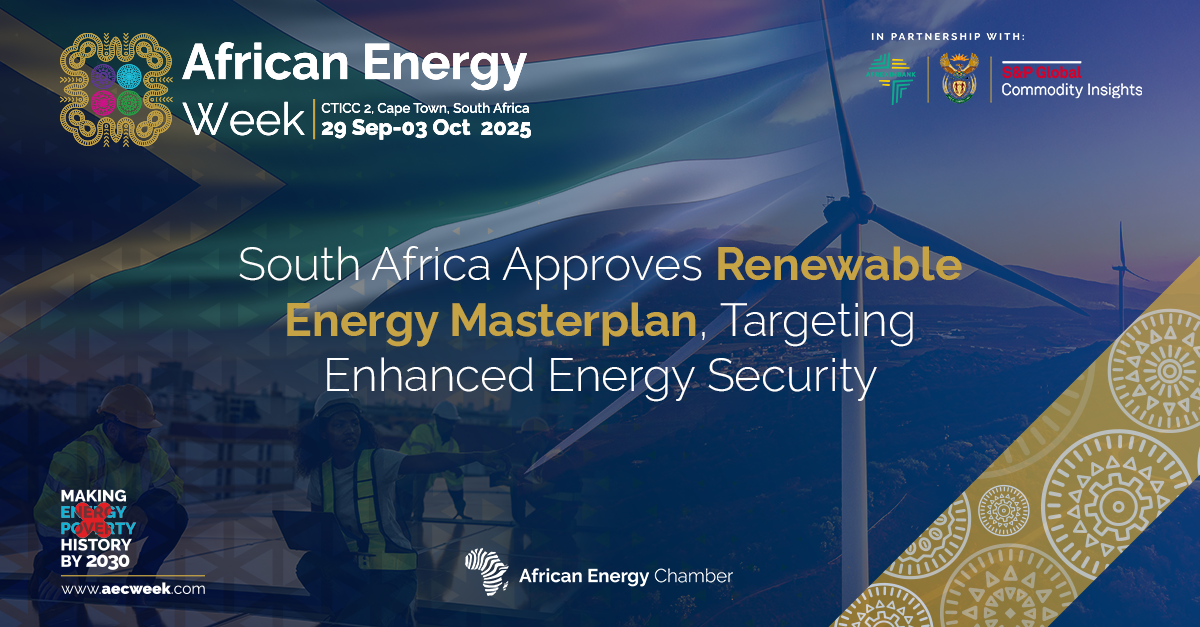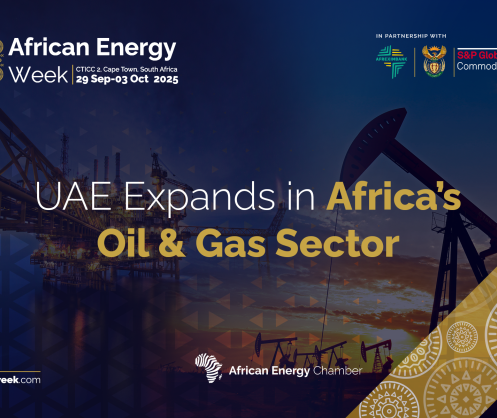
African Energy Week: Invest in African Energies 2025 will examine the impact the South African Renewable Energy Masterplan will have on the country’s power generation landscape.
The South African Cabinet has approved the South African Renewable Energy Masterplan (SAREM) for implementation, targeting energy security and broader industrial growth. The plan seeks to address challenges associated with local capacity, infrastructure and investment by providing a roadmap for developing renewable energy and battery storage technologies. For investors, the plan identifies a clear pathway to advancing power projects as South African electricity demand is expected to rise two-fold by 2040.
The upcoming African Energy Week (AEW): Invest in African Energies 2025 – taking place September 29 to October 3 – will examine the impact the SAREM will have on the country’s energy mix. Uniting African government and policymakers with energy operators and investors, the event seeks to drive investment in African energy, in alignment with broader goals of making energy poverty history.
AEW: Invest in African Energies is the platform of choice for project operators, financiers, technology providers and government, and has emerged as the official place to sign deals in African energy. Visit http://www.AECWeek.com for more information about this exciting event.
South Africa targets ambitious growth across its renewable energy market, striving to strengthen grid resilience through large-scale investments in generation and transmission infrastructure. Led by policies such as the Integrated Resource Plan (IRP) – revised in 2023 – the country envisages 29.5 GW of new capacity by 2030. Of this, 14.4 GW will be derived from wind while 6 GW comes from solar. The latest procurement round of the IRP targets 6.8 GW of renewable energy, 3 GW of natural gas and 1.5 GW of coal.
To realize these goals, the SAREM aims to leverage rising demand for renewable energy and storage technologies, with a focus on solar, wind, lithium-ion battery and vanadium-based battery technologies to drive industrial development in South Africa. The masterplan is anchored on four primary areas: supporting local demand for renewable energy and storage by unlocking system readiness; driving industrial development by building renewable energy and battery storage value chains; fostering inclusive development by driving transformation of the industry; and building local capabilities in terms of skills and technological innovation.
The SAREM is expected to fuel the already-growing South African renewable energy market. According to the African Energy Chamber’s State of African Energy 2025 Outlook, South Africa – alongside Egypt – is expected to continue leading Africa’s power generation in 2025. The continent has over 500 GW of renewable energy capacity in concept phase, 80% of which are in the North African region and South Africa. South Africa is also one of several countries leading in nuclear-based power generation. The SAREM will support growth by facilitating partnerships across the value chain, implementing targeted training programs while addressing challenges associated with regulatory barriers. While the SAREM provides significant benefits to the renewable energy landscape, Cabinet has directed that additional work be done on the masterplan to incentivize investors to fund projects. This includes the development of green hydrogen to meet international obligations of 5% blended fuel in aviation and maritime sectors by 2030.
During AEW: Invest in African Energies 2025, a multi-track program will explore how policies such as the SAREM will shape Africa’s energy landscape. A dedicated Energy Transition stage will investigate Africa’s strategic approach to driving a just transition, tackling key topics including Energy Security in Africa; Driving Local Value; Scaling-up Renewable Energy; and many more. A Powering Africa stage will address fundamental challenges and opportunities surrounding Africa’s electricity market. For South Africa, panel discussions on Bridging the Electricity Gap; Energy Efficiency; Strengthening Public and Private Sector Collaboration; Energy Diversification, and more, will identify opportunities for investors and project developers. Meanwhile, an Invest in African Energies: Country Spotlight on South Africa will examine the country’s energy landscape, including the advancement of oil and gas projects and the implementation of utility-scale renewable energy projects. From green hydrogen adoption to battery storage solutions to solar, wind and natural gas, the spotlight will explore the role an integrated energy mix will have on the country’s energy future.



